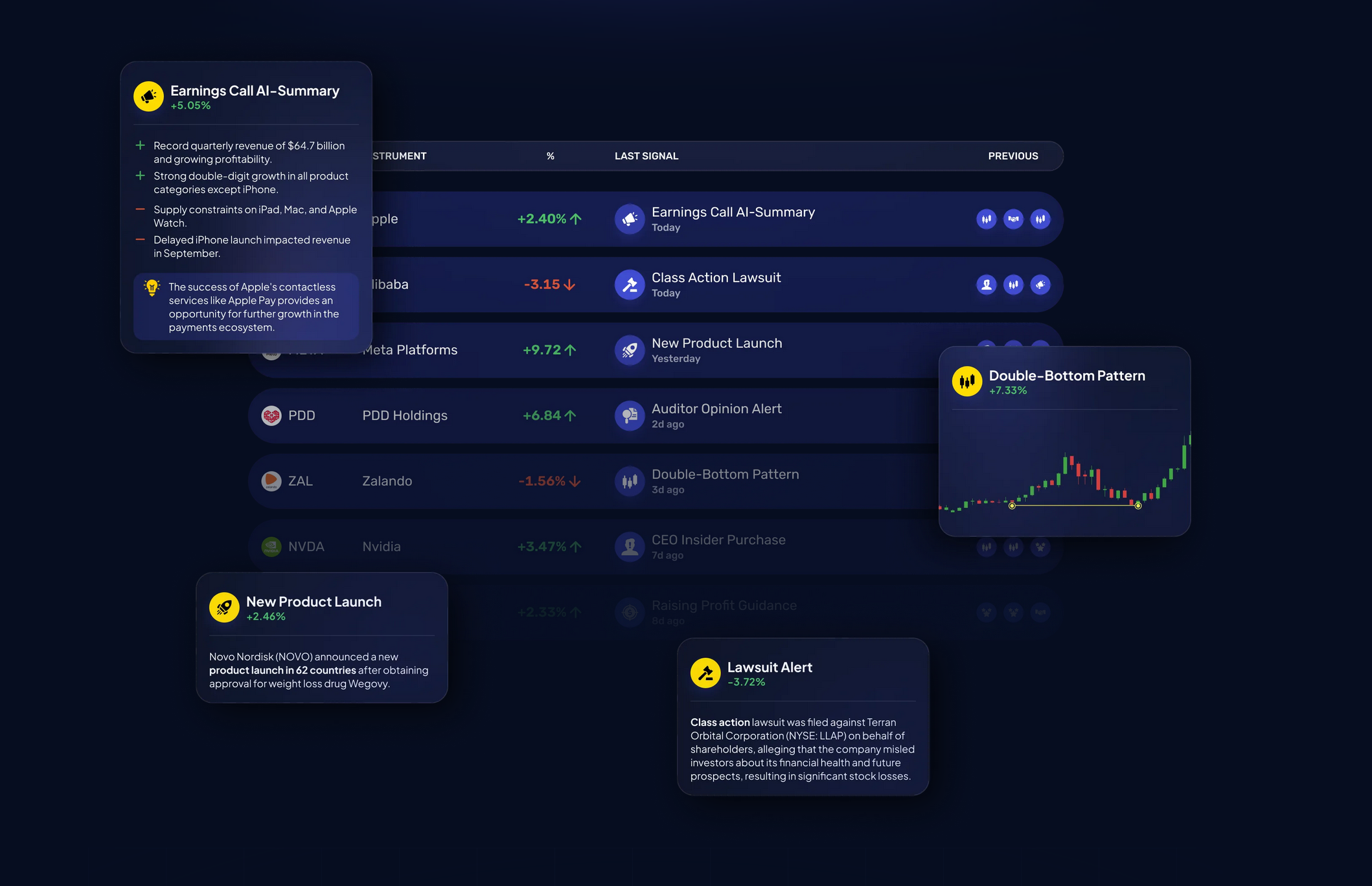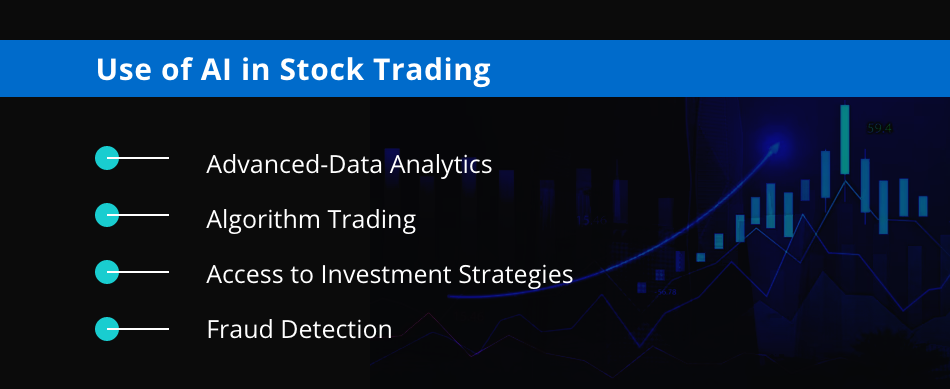20 Great News For Selecting AI Stock Trading Platform Sites
Wiki Article
Top 10 Tips For Assessing Market Coverage Using Ai Stock Predicting Or Analyzing Trading Platforms
Market coverage is an important element to take into consideration when evaluating AI platform for predicting or analyzing stocks in that it defines the breadth and depth of assets and markets which you have access to. Platforms with extensive market coverage let you diversify and explore global opportunities as well as adapt to various trading strategies. Here are 10 tips on how to evaluate the coverage of the platforms.
1. Evaluate Supported Asset Classes
Stocks: Ensure your platform is compatible with major stock exchanges like NYSE, NASDAQ LSE and HKEX and includes small, mid and large cap stocks.
ETFs: Verify that the platform offers an array of ETFs to provide diversified exposure across topics, sectors, and regions.
Options and futures. Find out whether your platform provides derivatives, such as options, futures or other leveraged instrument.
Commodities and Forex: Find out whether the platform can support forex pairs, precious-metals, agricultural products, energy commodities, and other commodities.
Cryptocurrencies Check whether the platform can support popular cryptocurrencies such as Bitcoin, Ethereum, and altcoins.
2. Check coverage in the geographic area.
Global markets - Check that the platform is able to provide coverage of all major markets across the world which includes North America (including copyright), Europe, Asia-Pacific markets as well as emerging ones.
Focus on regional markets: Find out if the platform focuses on particular markets or regions that are aligned with your trading goals.
Local exchanges - Examine for local or regional exchanges available in relation to your location and strategy.
3. Consider comparing real-time data with delayed data Delayed Data
Real-time data is essential for quick decision making, particularly in active trading.
Delayed Data: Check whether the data that is delayed can be accessed at no cost or at an affordable cost. These may be sufficient for long term investors.
Latency of data. Find out how your platform can reduce latency in real-time data feeds.
4. Assess Historical Data Availability
Historical data depth: Ensure the platform offers vast historical data (e.g. 10, more than 10 years) to backtest and analyze.
The granularity of the data: Determine if the historical data includes intraday, daily, weekly, and monthly level of granularity.
Corporate actions: Verify that historical data takes into account stock splits (if applicable), dividends, and any other corporate actions.
5. Check the market depth and order book data
Level 2 data: Make sure that the platform has Level 2 data (order book depth) to facilitate price discovery and execution.
Check for real-time bidding and asking spreads. This will ensure that the pricing is correct.
Volume data: Make sure the platform provides detailed information regarding volume that can be used to analyse market and liquidity activities.
6. Review the coverage of Indices Sectors
Major indices - Make sure your platform supports major indices, like the S&P 500 (e.g. NASDAQ 100 or FTSE 100), for benchmarking based on indexes.
Sector-specific data: Find out if the platform provides data for specific sectors (e.g. technology, healthcare, energy) to conduct a targeted analysis.
Customized indices. Find out if you are able to make or monitor custom indices using your own criteria.
7. Evaluation of the integration with Sentiment and News data
News feeds - Make sure your platform is equipped with real-time market-driven news feeds (e.g. Bloomberg, Reuters).
Sentiment analysis: Find out whether the platform has tools for analyzing sentiment based on news media, social media or other sources of data.
Strategies that are based on events (e.g. economic announcements, earnings announcements) Make sure that your platform allows trading strategies based on events.
8. Verify Multimarket Trading Capabilities
Cross-market trading: Make sure that the platform supports trading across different markets and asset categories through a single interface.
Currency conversion: Check if the platform is compatible with multicurrency accounts, and currency conversions to facilitate international trading.
Support for time zones: Check whether your platform permits you to trade in different time zones.
9. Evaluation of Alternative Data Sources
Alternative data: Check whether the platform incorporates different sources of data (e.g., satellite imagery, internet traffic, credit card transactions) to gain unique insights.
ESG data: Verify if the platform includes environmental as well as social and governance (ESG) information for socially responsible investment.
Macroeconomic data: Ensure the platform has macroeconomic indicators (e.g. inflation, GDP, or interest rates) to conduct a fundamental analysis.
Review customer feedback and market Reputation
Reviews from users: Check for feedback from users to get a feel for the platform.
Reputation in the industry: Check if the platform has been acknowledged by experts in the industry for its market coverage.
Find testimonials that prove the platform's effectiveness in certain areas and asset classes.
Bonus Tips
Trial period for free: Check the market coverage of the platform and its data quality with either a trial or demo.
API access: Make sure the API on the platform permits you to access programmatically market data for custom analysis.
Support for customers: Make sure that the platform provides support for any queries relating to markets or data.
Check these points to determine the market coverage provided by AI stock trading platforms. Choose a platform with access to the markets, data and tools that you need for successful trading. Market coverage is important to diversify portfolios, discover new opportunities and to adapt to changing market conditions. Check out the best ai stock picker advice for blog info including ai investing, ai investing platform, ai for stock predictions, ai for trading, ai trading, trading ai, best ai stock, best ai trading app, market ai, incite and more.

Top 10 Tips To Assess The Transparency Of Ai Stock Trading Platforms
Transparency plays an important role in assessing AI-driven trading and platform for stock predictions. Transparency is crucial because it allows users to trust the platform, understand the choices made, and check the accuracy. These are the top 10 tips to determine the level of transparency on such platforms.
1. A Clear Explanation of AI Models
Tip: Make sure the platform is clear about the AI models and algorithms that are used to make predictions.
Why: Understanding the underlying technology allows users to assess its reliability and limitations.
2. Disclosure of Data Sources
TIP: Determine if the platform is transparent about the sources of data it relies on (e.g. historical stock data, news, or social media, etc.).
Why: Knowing data sources helps ensure the platform uses accurate and comprehensive information.
3. Backtesting and Performance Metrics
Tips - Search for transparent reporting regarding the performance metrics, such as the accuracy rate, ROI, and backtesting.
This allows users to verify the efficiency of the platform as well as its past performance.
4. Real-time notifications and updates
Tips: Make sure you are receiving real-time alerts and updates on trades, predictions or modifications to the system.
What is the reason? Real-time transparency means users are always aware of important actions.
5. Transparent Communication on Limitations
TIP: Check if your platform provides information about the limitations and potential risks of the trading strategies it employs and the predictions it makes.
The reason is that acknowledging limitations can help build trust and allows users to make educated decisions.
6. Raw Data to Users
Tip: Find out if you have access to the raw data, or the intermediate results AI models use.
Why is this: Raw data is a great way to confirm predictions and conduct analysis.
7. Transparency and transparency in fees and costs
Tip: Make sure that all fees, subscription charges, and cost-savings are clearly stated on the platform.
Transparency in pricing is a positive thing. It helps avoid unexpected costs and boosts confidence.
8. Regular reports and audits
Tips: Make sure the platform is regularly updated with reports or undergoes audits from third parties to verify its performance and operations.
Independent verification is essential because it adds credibility to the process and guarantees accountability.
9. Explainability of Predictions
Tip Check to determine whether there is an description of how the platform makes certain predictions and recommendations (e.g., feature priority and decision trees).
The reason: Explainability helps users to better understand AI decisions.
10. User Feedback and Support Channels
Tips: Make sure the platform offers open channels to receive feedback from users as well as provide assistance. You should also check whether it responds to user complaints in a manner that is transparent.
What is Responsive Communication? It demonstrates an commitment to transparency, and the satisfaction of users.
Bonus Tip - Regulatory Compliance
Make sure that the platform is compatible with all applicable financial regulations. This provides an extra layer of security.
Through analyzing these functions, you can decide whether or not the AI trading platform or predictions of stocks are reliable. Then, you will be able to make informed choices and be confident in the capabilities of AI. See the top rated ai stock analysis url for more recommendations including ai tools for trading, stocks ai, ai share trading, ai stock trader, ai share trading, ai stock investing, ai options trading, free ai stock picker, invest ai, best stock prediction website and more.
